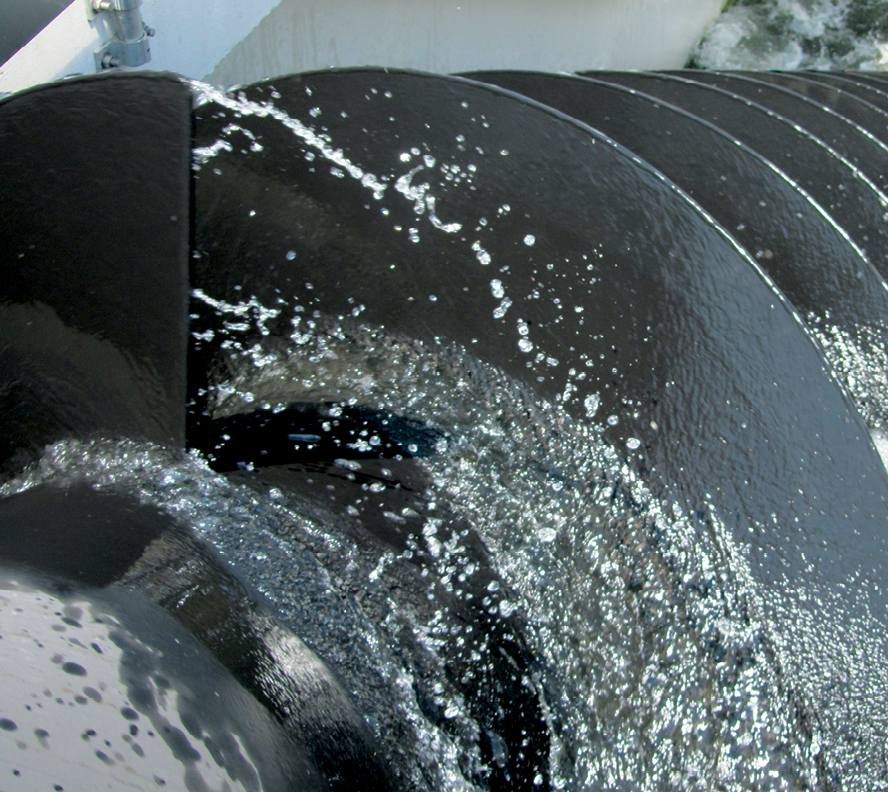For decades, engineers have used screw pumps for wastewater plant lift stations, storm water pumping, and other industrial applications. These pumps are used to move large volumes of liquid, but their design also makes it easy for large objects to pass through without clogging the system. This means water that is contaminated with various objects can be pumped with ease.
Screw pumps can also be operated when no water is present. This means there is no need to install additional parts to stop the pump from running in dry conditions. The pump can continue to operate regardless of how little water is present.
Screw pumps are not only efficient, they are also low maintenance. The pumps are designed with very few moving parts, and these parts constantly run at a slow speed. This innovative design minimizes wear and tear and the need for repairs.
Screw pumps can be used in a variety of industrial settings. However, there are two main types of screw pumps that engineers must choose between: open and enclosed. Before placing an order, it’s important to understand the differences between these two designs.
An Introduction to Open and Enclosed Screw Pumps
Before learning about the benefits of both open and enclosed screw pumps, it’s best to learn the differences between their designs.
An open screw pump has four components: a spiral screw, upper bearings, lower bearings, and a drive assembly. Open screw pumps are placed within concrete or steel troughs at a slight angle, leaving their screw-shaped design exposed.
Enclosed screw pumps are very similar to open screw pumps, however they are encased within a tube so their screw-shaped design is not exposed. Because the pump lies within a tube, it does not need to be placed within a cement or steel trough.
There are two types of enclosed screw pumps: Type S and Type C. Both of these types are enclosed within tubes, however the tube in a Type S design is stationary, whereas the tube in a Type C is not. Type C pumps are designed with two spiral flights welded to the inside of the pump’s tube, which rotates as it operates.
The Benefits of Open Screw Pumps
The open screw pump is known for its simplicity and reliability. These pumps are incredibly low maintenance as it is, however they can become even more durable. If the lower bearing is designed with a permanently greased lubricated roller bearing or a sleeve bearing, this will minimize the wear and tear even further.
If a repair is needed, it may be easier to identify the issue on an open screw pump than it would be on an enclosed pump. This is because the open design of an open screw pump makes it possible to see all of the moving parts.
The bottom of an open screw pump can operate in both submerged and non-submerged conditions, which makes it more versatile than other screw pumps.
The Benefits of Enclosed Screw Pumps
As previously mentioned, enclosed screw pumps are encased within a tube, which eliminates the need for a steel or concrete trough. Because it does not need a trough, it is considered easier to install than an open screw pump. It’s also a better choice for clients who are in need of a quick replacement and do not have the time to install a trough.
Both open and enclosed screw pumps are efficient, however the Type C pump operates at the highest efficiency. In fact, it is estimated that the Type C pump is between 5-10% more efficient than the open screw pump, which is why it has become a popular choice.
The Type C enclosed pump has a maximum inclination of 45 degrees, whereas the open screw pump and Type S enclosed pump both have a maximum inclination of 40 degrees. The difference between 40 and 45 degrees may not seem significant, but it results in the Type C enclosed pump leaving a much smaller footprint.
There are benefits to the Type S enclosed screw pump, too. The top of Type S enclosed pumps can be fixed in place or mounted onto a pivot. If it is mounted onto a pivot, the tube can be repositioned to adjust the pumping rate. Both the open and Type C designs do not have this flexibility.
How to Choose the Right Type of Screw Pump
There are benefits to both open and enclosed screw pumps, which can make it difficult to determine which is right for your needs. Instead of focusing on the design of the pump, think about how the pump will be used. These are the factors that should be taken into consideration when selecting a screw pump:
- Capacity
- Speed
- Inclination
- Number of Flights
- Horsepower
For example, the number of flights in a screw pump will have an impact on the output capacity of the system. This is because each additional flight increases the output capacity of the pump by about 25%. Therefore, it’s important to calculate the maximum output capacity needed so you can determine how many flights you will need. By approaching the decision in this manner, you will be able to select the perfect open or enclosed screw pump for your needs.
To learn more about open and enclosed screw pumps or to place an order, contact Lakeside Equipment Corporation today. At Lakeside Equipment Corporation, we are committed to treating water so it can be used as drinking water or safely returned to the environment. Since 1928, we have provided local governments and corporations with the high quality services and top-of-the-line equipment they need to help us achieve this goal. Call 630-837-5640 or visit our website to connect with a representative today.








